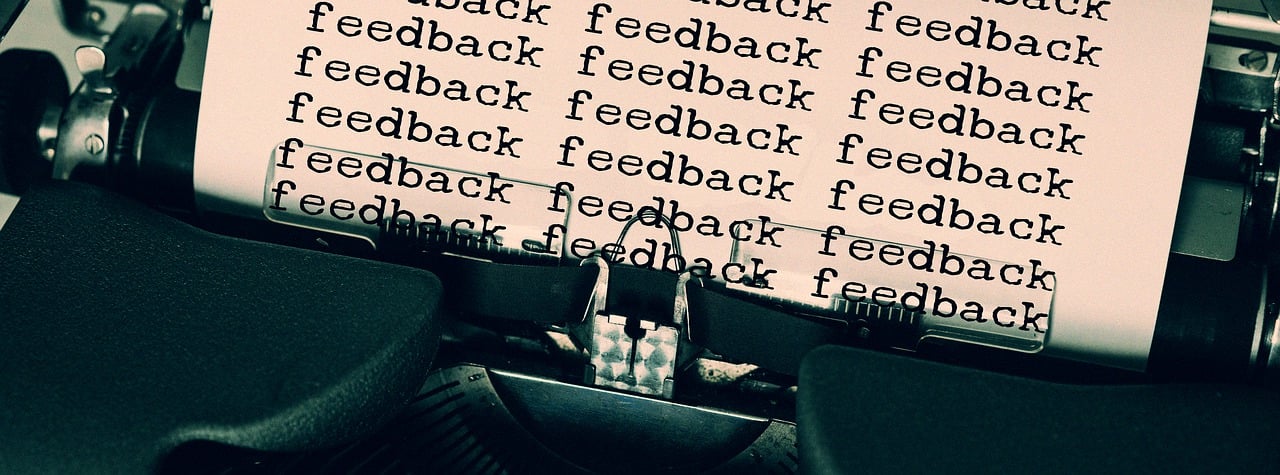Top Strategies for Handling Increased Customer Service Demand in Q4

You get busy every Q4, and Customer Service Demand can go way up. Fast action helps your team stay ready.
Proactive planning lets you find problems early.
Smart technology helps your team answer faster.
Empowered teams fix problems with confidence.
Studies show strong leaders and a good culture help teams use technology better. You get better results when you use new tools with good planning and support.
Key Takeaways
Start planning for Q4 early. Look at old data. Get your team and resources ready for busy times.
Use smart forecasting to guess busy times. Make flexible schedules. Match staff with busy hours. Keep your team full of energy.
Use automation tools like chatbots and ticket systems. These tools help answer customers faster. They also help organize messages better.
Give support on many channels. Put all conversations in one place. This helps give smooth service on email, social media, chat, and phone.
Give self-service choices like FAQs and knowledge bases. These help customers find answers fast. This also helps your team have less work.
Teach and encourage your team with short lessons. Set clear goals. Give praise often. This keeps service quality high and lowers stress.
Watch key performance metrics. Ask for customer feedback often. This helps find problems early and fix them fast.
Care about team wellness. Give flexible work choices and support programs. This keeps agents happy and helps them give great service when it gets busy.
Q4 Customer Service Demand

Demand Spikes
Every Q4, Customer Service Demand goes up a lot. This happens because many people shop for holidays. Veterans Day, Thanksgiving, Black Friday, Cyber Monday, Hanukkah, Christmas, and New Year’s all bring more shoppers. More people visit your website, social media, and call your phone lines. You get lots of questions about products, shipping, and returns.
Shoppers begin buying in October and keep going until December.
Big sales like Black Friday and Cyber Monday bring many buyers.
After Christmas, people use gift cards and shop clearance sales, so demand stays high.
Your order numbers can double or even get four times bigger than usual. This busy time lasts for months, not just days. Your team must handle more cases, reply faster, and meet higher expectations.
Tip: Think of Q4 as a long race, not a short one. Demand stays high from October to December, so make sure your team and resources last.
Service Quality Impact
When Customer Service Demand goes up, your team feels stressed. More tickets mean longer waits and more mistakes. If you do not plan, customers may get upset by slow replies or missed messages. Service quality can drop if your team gets too busy.
You want to keep service good, even when it is busy. Customers want fast answers, clear updates, and easy returns. If you do well, you earn trust and loyalty. If you fall behind, you might get bad reviews and lose sales.
Planning Ahead
You can avoid Q4 problems by planning early. Look at last year’s data first. Find your busiest days and count how many cases you had. Use this to guess your Customer Service Demand for this year.
Here is a simple checklist to help you get ready:
Talk to suppliers and partners early. Ask about lead times and backup plans.
Watch for warehouse space, not enough workers, and shipping delays. Plan with your logistics partners.
Update your website with delivery dates. This helps customers know what to expect.
Get ready for sudden shipping price changes. Change your prices if you need to.
Finish your marketing and shipping plans before big sales.
Stay flexible. Be ready to change plans if something new happens.
Match your marketing to big Q4 events.
Test your systems to make sure they can handle more visitors.
Use tools to predict inventory needs and avoid running out.
Keep popular items in stock for after-holiday sales.
Note: The best way to handle high Customer Service Demand is to plan early, stay flexible, and keep your team updated.
Staffing Strategies

Forecasting Needs
You want to get ahead of Q4 rushes, so start with smart forecasting. Look at your past data to spot trends. Time series analysis works well if you have at least two years of clean records. This method helps you see patterns, like when calls spike or slow down. Companies like American Express have used these models to cut staffing costs by 17%. If your business changes a lot or you launch new channels, try driver-based forecasting. This approach lets you plan for things that did not happen before, like a new product or a big sale.
Machine learning and AI forecasting can help you go even further. These tools look at lots of data, including weather, social media, and economic news. They adjust fast when things change. You can also use scenario planning to prepare for surprises. Make a few "what if" plans for different situations. Many teams mix these methods to get the best results.
Tip: Update your forecasts often. Q4 can change quickly, so check your numbers every week.
Try driver-based forecasting for new changes.
Add machine learning for more accuracy.
Plan for surprises with scenario planning.
Flexible Schedules
Flexible schedules help your team handle busy days and keep energy high. You can offer flexi-time, compressed workweeks, or even remote shifts. When people pick hours that fit their lives, they feel happier and work better. This balance means fewer sick days and less burnout. Your team can cover more hours, so you answer customers faster.
Let team members swap shifts or adjust start times.
Use technology to track hours and manage changes.
Set clear rules so everyone knows what to expect.
Employees who feel trusted and valued stay longer and work harder. Flexible scheduling helps you keep your best people during high Customer Service Demand.
Seasonal Hires
Seasonal hires give you extra hands when you need them most. Start hiring two to three months before Q4. Use online job boards and video interviews to move fast. Keep your application process short and easy, so you do not lose good candidates. Digital onboarding tools help new hires get started quickly.
Post jobs early and use simple forms.
Give training materials right away.
Assign mentors or buddies to help new staff.
Spread out training sessions to avoid overload.
Check in often and ask for feedback.
A good payroll and time tracking system keeps things smooth. Make sure you classify employees correctly and track hours well. Clear communication with your regular team helps everyone work together. When you follow these steps, your seasonal hires can jump in fast and help you keep up with Customer Service Demand.
Automation Tools

Chatbots
You want to help customers fast, especially when Q4 gets busy. Chatbots can do that for you. These smart helpers answer common questions right away, even when your team sleeps. You can set up chatbots to greet visitors, answer order questions, or help with returns. Many companies see chatbots cut response times by up to 80%. That means your customers get answers in seconds, not hours. During the holidays, chatbots can handle simple requests, so your team can focus on bigger problems.
You can also use AI-powered chatbots to support many languages and spot customer emotions. This makes every shopper feel welcome. If you set up your chatbot to hand off tough questions to a real person, you keep service smooth.
Tip: Train your team to work with chatbots. When people and bots work together, you solve problems faster and keep customers happy.

Ticket Systems
Ticket systems help you stay organized when messages flood in. You can collect emails, chats, social posts, and calls in one place. This makes it easy to see every customer’s story. When you use a ticket system, you can:
Route each question to the right person.
Track every case from start to finish.
Let customers help themselves with a knowledge base.
Automate simple tasks like tagging or sorting.
Use reports to spot trends and fix problems fast.
A good ticket system keeps your team from feeling lost. You see who needs help, who is waiting, and what issues pop up most. This helps you fix problems before they grow.
Customers notice when you answer quickly and solve problems the first time. Ticket systems help you do both, even when Q4 gets wild.
Unified Inbox
A unified inbox puts all your messages in one spot. You do not have to jump between email, chat, and social media. You see everything together, so you never miss a message. This saves time and keeps your team focused. You can assign messages, leave notes for teammates, and track who answered what.
Here are some ways a unified inbox helps during Q4:
You save time by not switching between platforms.
You lower the risk of missing important messages.
You organize all customer chats in one view.
You make it easy to set priorities and respond fast.
You boost teamwork with shared notes and assignments.
Customers expect you to remember their last message, even if they switch from chat to email. A unified inbox lets you do that. You give a smooth, friendly experience, no matter how busy things get.
Note: Most shoppers want the same service across every channel. A unified inbox helps you deliver that, even when demand spikes.
Omnichannel Support

Multiple Channels
You want customers to contact you in ways they like. In Q4, shoppers use many ways to ask questions and get help. Some people send emails. Others use social media, SMS, or live chat. You need to be ready on every channel.
Give email support. Most customers pick email in Q4.
Add social media support for fast replies and public chats.
Use SMS and mobile messages for younger shoppers who text a lot.
Offer live chat on your website for quick help.
Keep phone lines open for urgent problems.
You can send order updates and delivery alerts by SMS and email. Customers want these messages quickly, especially during busy holidays. If you send updates early, shoppers can plan better and worry less.
Tip: Use real-time analytics to see which channels get the most questions. Change your staffing and messages to match what customers like.
Here’s a look at which channels are popular in Q4:
Channel | % of Customers Who Prefer It | Best Use Case |
|---|---|---|
Order updates, support cases | ||
Social Media | 22% | Quick replies, public posts |
SMS/Text | 19% | Delivery alerts, reminders |
Mobile Messaging | 59.1% (under 30) | Fast help for young shoppers |
RCS Messaging | Growing fast | Rich media, promotions |
When you offer support on all these channels, customers find it easy to reach you. You build trust by giving them choices.
Centralized Conversations
You need a way to keep all customer chats organized. If you use many channels, messages can get lost or repeated. Centralizing chats helps you reply faster and keep answers the same.
Use customer communications management software to bring all messages together.
Store customer history in one spot so you see past questions.
Set up templates for common replies. This keeps your tone the same everywhere.
Use automation tools for instant first replies. Your team can focus on hard problems.
Sort and rank tickets by urgency or customer status. You fix important issues first.
Centralizing chats means you spend less time searching for info and more time helping customers. You also keep your brand voice strong and avoid mistakes.
Here’s what happens when you centralize support:
You solve tickets faster, even when Q4 is busy.
You give personal answers using customer data.
You keep product info and prices the same everywhere.
You make customers happier and keep them coming back.
If you mix automation with human support, you create a smooth experience. Customers get quick answers for easy questions and expert help for hard ones. This helps you handle Q4 demand without losing quality.
Note: Teams using centralized platforms keep more customers, get more sales, and see more repeat buyers. You build stronger relationships and grow your business.
Self-Service Options

FAQs
You want answers fast when Q4 gets busy. FAQs help you do that. You can set up a list of common questions and answers on your website. Customers find help without waiting for a live agent. This saves time for everyone.
FAQs handle routine questions, so your team can focus on tough cases.
AI-powered FAQs understand different ways customers ask questions. You get accurate answers every time.
Your agents feel less stressed because they deal with fewer repetitive tickets.
Wait times drop, and customers get help right away.
You can update FAQs often. Add new questions as they come up during Q4.
Pro tip: Keep your FAQ page easy to read. Use short answers and clear language. Update it every week during Q4.
Knowledge Base
A strong knowledge base gives your customers the power to solve problems on their own. You can build a library of guides, how-tos, and troubleshooting steps. Customers search for answers and fix issues without help from your team.
Here are features you should include:
Smart search that finds answers fast.
Organized categories and tags for easy browsing.
Videos and pictures to show steps clearly.
Fresh content with regular updates.
Ratings and feedback so you know what works.
Mobile-friendly design for shoppers on the go.
Links to chat, ticketing, or CRM for seamless support.
Secure access controls to protect sensitive info.
Analytics to track what customers search for most.
Custom branding to match your company style.
Easy editing tools for quick updates.
Scalable and secure setup for future growth.
Customers like knowledge bases that work well on phones and tablets. You help more people when your guides are easy to find and use.
Purchasing Options
You can boost sales and keep customers happy with self-service purchasing options. One-click buying makes checkout simple. Customers finish orders with one tap. You remove extra steps and speed up the process.
Fast checkout means fewer abandoned carts.
Shoppers feel satisfied because they get what they want quickly.
One-click buying encourages impulse purchases, especially during Q4 sales.
Easy checkout brings customers back for repeat orders.
Self-service tools like chatbots, FAQs, and forums help customers solve problems any time, day or night.
Nearly 40% of customer questions in Q4 get solved through self-service channels. You save time, cut costs, and keep your team focused on complex issues.
If you offer simple purchasing and support options, you build trust and loyalty. Customers remember smooth experiences and come back for more. You handle more orders and questions without overwhelming your team.
Process Efficiency

Standard Responses
You want to reply to customers fast and keep answers clear. Standard response templates help you do this. Templates save time and make sure every answer is high-quality. Email assistants can suggest replies for you. You just check and send them. This helps you answer quickly when you get lots of questions in Q4.
Templates help your team stay the same. Everyone uses the same words and tone. Customers get a smooth experience every time. Companies using templates finish reviews 30% faster and reach goals 15% more often. You can make templates for common questions about shipping, returns, and order status. Always add the customer’s name or order details. This makes your messages friendly and not robotic.
Tip: Change your templates often. Q4 brings new questions, so keep answers fresh and helpful.
Workflow Automation
Workflow automation makes your team’s job easier. Automation tools do simple tasks like sorting tickets or sending emails. This lets your team focus on hard problems and personal service. Many businesses see costs go down by 10% and profits go up by 8% with automation. Your team makes fewer mistakes and works faster.
Here’s what workflow automation can do:
Save about 30% of your team’s time on easy tasks.
Cut errors by 94%, so customers get correct answers.
Make employees happier. Almost 90% of workers like automation.
Track important things like how fast you solve problems and customer happiness.
Grow your support easily as demand goes up in Q4.
You can use automated surveys to get feedback after each case. Use real-time data to find problems and fix them fast. Automation keeps you organized and ready for anything.
Internal Communication
Good internal communication helps your team move fast. Everyone needs to know what is happening, especially in Q4. Regular team meetings help you share news and solve problems together. Coaching sessions give support and build problem-solving skills.
Surveys help you find where communication breaks down. When you listen to feedback, you fix gaps and make sure messages reach everyone. Change how often you talk as work gets busier. Quick updates by SMS or chat help your team handle emergencies.
Here’s how good communication helps:
Find problems early and fix them before they grow.
Keep everyone interested and working hard.
Make sure important news gets to your team fast.
Celebrate wins and learn from mistakes together.
Setting clear goals and tracking response times helps you see how well your team communicates. Mobile and cloud tools keep your team connected, even if they work in different places. You get faster answers and better results during Q4.
Team Empowerment

Training
You want your team to be ready for Q4. Make a training plan that fits busy days. Use short videos and small lessons. Agents can learn fast and do not have to wait for help. They can go at their own speed and watch lessons again if needed. New agents should work with experienced teammates. They can watch real cases and ask questions right away. Split training into two parts. One part is for systems and processes, like tickets or returns. The other part is for product details. Each lesson should cover only one topic. This keeps things simple and not too much at once. Set clear goals for your team. Track how many tickets each person handles. Watch how fast they reply and how happy customers are. When you check these things, you know who is ready for live cases.
Tip: Change training materials often. Q4 brings new products and rules, so keep your team updated.
How to build a Q4 training program:
Make short, easy training videos.
Set up learning with experienced agents.
Keep system/process and product training separate.
Set and check clear goals before agents start live work.
Motivation
Keeping your team excited in Q4 is important. Remind them to take breaks. Breaks help people feel better and work harder. Set small goals that everyone can reach. When you break big goals into steps, your team feels less stress and gets more done. Celebrate every win, big or small. A simple thank you or team message can make people happy and stop burnout. Try a buddy system so agents help each other. Let everyone share ideas and fix problems together.
Hold meetings to check progress and learn from mistakes.
Give support and meet often to stop burnout.
Plan fun activities, like coffee breaks or vent sessions.
Use games or contests to make work fun.
Say thank you for good work—people who feel valued work harder.
Did you know? Not feeling valued is a big reason people quit. Show your team you care about their hard work.
Wellness
Q4 can get stressful very fast. You need to care for your team’s wellness to keep service good. Flexible schedules help people balance work and life. Let your team swap shifts or change start times. This lowers stress and keeps people happy. Offer wellness programs, like gym passes or mental health help. These keep your team healthy and focused. Give feedback often and hold team events. This helps everyone feel like they belong and want to stay. Welcome new hires with special events. This helps them feel part of the team and learn fast.
Here’s a quick look at how wellness helps:
Wellness Initiative | Employee Impact | Customer Service Result |
|---|---|---|
Flexible working arrangements | Less stress, better work-life balance | Higher customer ratings |
Employee recognition programs | More motivation, higher morale | Consistent service quality |
Wellness programs | Better health, fewer sick days | Steady energy, reliable support |
Regular feedback events | Stronger productivity, less turnover | Improved customer satisfaction |
New starter integration events | Faster team bonding, early retention | Experienced staff, better service |
Take care of your team’s wellness. Happy and healthy agents give better service, even when Q4 is busy.
Metrics & Feedback

Performance Tracking
You want to know how well your team handles Customer Service Demand in Q4. Start by tracking the right numbers. These numbers show you where things work and where you need to improve. Here are the most important metrics to watch:
Average resolution time – How long it takes to solve a ticket.
Occupancy – The percent of time agents spend helping customers.
First response time – How fast your team replies to new tickets.
First contact resolution – How many tickets get solved on the first try.
Tickets handled per hour – How many tickets each agent works on every hour.
Tickets solved per hour – How many tickets each agent finishes every hour.
Customer satisfaction score (CSAT) – How happy your customers feel after getting help.
Customer Effort Score (CES) – How easy it is for customers to get their problems fixed.
Agent feedback – What your team thinks about the tools and process.
Set clear goals for each metric. Check your numbers every day. If you see a problem, act fast. You can use simple dashboards or reports to keep everyone on track.
Tip: When you track these numbers, you spot issues before they grow. Your team can fix problems and keep service strong, even when things get busy.
Customer Feedback

You need to know what your customers think. Real-time feedback helps you make quick changes. Use short surveys right after a customer gets help. Keep surveys simple—three to five questions work best. Ask one question at a time. Use both rating scales and open-ended questions. This way, you get honest answers and useful ideas.
Try tools like Hotjar or Zendesk to collect feedback without slowing down your customers. Personalize surveys based on what just happened. For example, if someone just got help with a return, ask about that experience. Time your surveys so the experience is still fresh.
When you listen to feedback, you show customers you care. This builds trust and keeps them coming back.
Quick Adjustments
You want to act on feedback right away. Organize the feedback you get and look for patterns. If you see the same complaint often, fix it fast. For example, if many people say checkout is slow, work with your tech team to speed it up. Tell your customers when you make changes based on their ideas. This closes the feedback loop and makes people feel heard.
Let your Customer Success Managers act as the voice of your customers. They can push for changes and keep everyone updated. Stay transparent. Share updates with your team and your customers. This keeps everyone in the loop and encourages more feedback.
Fast action on feedback helps you stay ahead during Q4. You keep service quality high and customers happy, even when Customer Service Demand spikes.
If you plan early and use smart tools, your team will do well in Q4. Good service helps people trust your brand. More than 80% of shoppers stay with brands they trust. When you treat customers like real people, 75% feel closer and return again. Try to use technology, clear steps, and a kind team together.
Description | Impact on Business | |
|---|---|---|
Personalization | See each customer as special | Builds loyalty |
Knowledgeable Staff | Agents fix problems quickly | Grows trust |
Multi-channel Support | Help by phone, chat, and more | Quick solutions |
Communication Quality | Clear and fast updates | Boosts sales |
Start now. Your team and your customers will be glad you did.
FAQ
How can I prepare my customer service team for Q4?
Start training early. Share last year’s data and set clear goals. Use short lessons and real examples. Let your team practice with real cases. Give feedback often so everyone feels ready.
What tools help manage high customer service demand?
Try chatbots, ticket systems, and a unified inbox. These tools organize messages and speed up replies. Use automation to handle simple tasks. This way, your team can focus on complex issues.
How do I keep service quality high during busy times?
Set up standard responses for common questions. Track key metrics like response time and customer satisfaction. Update your FAQs and knowledge base weekly. Celebrate wins to keep your team motivated.
What’s the best way to handle customer feedback in Q4?
Send short surveys after each support case. Look for patterns in the answers. Fix common problems fast. Tell customers when you make changes based on their feedback. This builds trust and loyalty.
How can I reduce team stress during Q4?
Offer flexible schedules and regular breaks. Use wellness programs and team activities. Check in with your team often. Recognize hard work with small rewards or shout-outs. A happy team gives better service.
Should I hire seasonal staff for Q4?
Yes, if you expect a big spike in demand. Start hiring early. Use simple onboarding and pair new hires with experienced agents. Give clear instructions and regular feedback. This helps new staff jump in quickly.

TangBuy: A Smarter Way to Dropship in 2025
If you're looking to stay competitive with dropshipping in 2025, speed and trend-awareness are key. TangBuy helps you stay ahead with real-time product trends, fast fulfilment, and factory-direct sourcing. With over 1 million ready-to-ship items, 24-hour order processing, and seamless Shopify integration, TangBuy makes it easier to test, scale, and succeed in today's fast-moving eCommerce landscape.
See Also
Effective Ways To Attract Shoppers To Your Online Store
Best Five Methods To Find Dental Products For Selling
Affordable High-Margin Items To Increase Store Sales Fast

